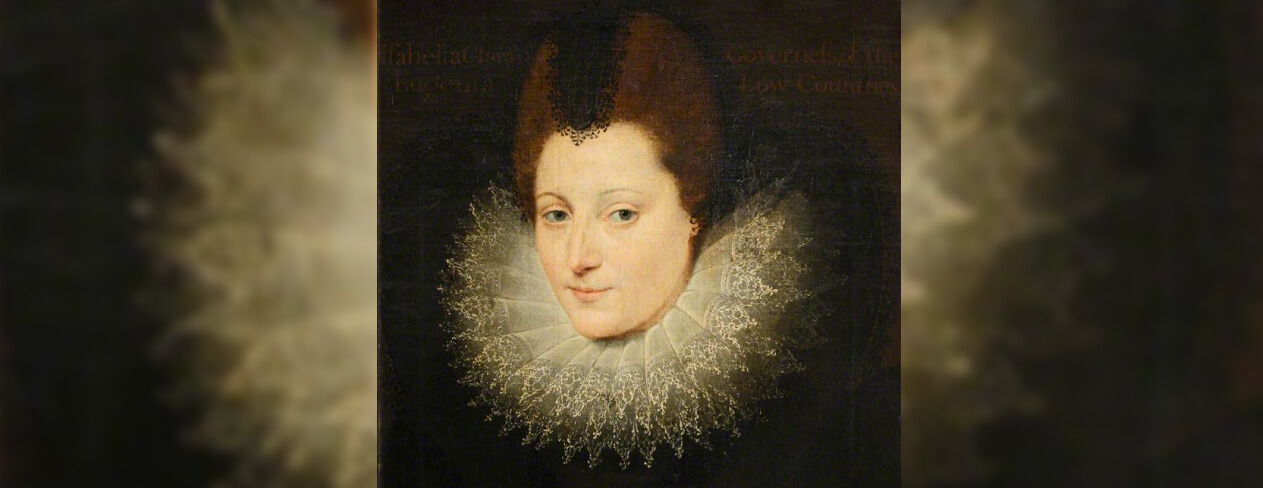
Infanta Isabella Clara Eugenia was born on 12 August 1566. She was the eldest surviving daughter of Philip II of Spain from his third marriage to Elisabeth of Valois, the daughter of Henry II of France.
Despite the early loss of their mother, Isabella Clara and her sister Catalina Michaela enjoyed a safe and loving childhood. Philip’s deep affection for his late wife extended to his little daughters, and the new Queen, Anna of Austria — daughter of Emperor Maximilian II — proved a fond stepmother to them. The intelligent and talented infantas had a cordial relationship with their governesses and tutors, who educated them brilliantly in languages, mathematics, and the arts.
Isabella Clara’s fairy-tale life continued even into her politically arranged marriage to Archduke Albert, son of Emperor Maximilian II, which turned out to be happy and harmonious. Philip II made the Spanish Netherlands a semi-independent state for his beloved daughter. For nearly a quarter of a century, she was the most powerful woman in Europe. Her reign brought an end to religious persecution, ushering in peace as well as economic, social, and artistic development in the Netherlands.
The only shadow over the infanta’s seemingly perfect life was the frequent visits of death. In their early years, Isabella Clara and Catalina Michaela lost their mother and all their siblings except the future Philip III of Spain. Later, Isabella Clara had to mourn her beloved father and sister within a year. Her own three children all died in infancy, thwarting her hopes of establishing her own dynasty in the Netherlands. Another grievous blow was the death of her husband Albert.
Isabella Clara continued to serve as governor on behalf of her nephew, Philip IV. After her death in 1633 at the age of 67, the Netherlands was re-incorporated into the Spanish Kingdom.
Access to the Metatext via placing an order for an augmented product. See Terms of Use